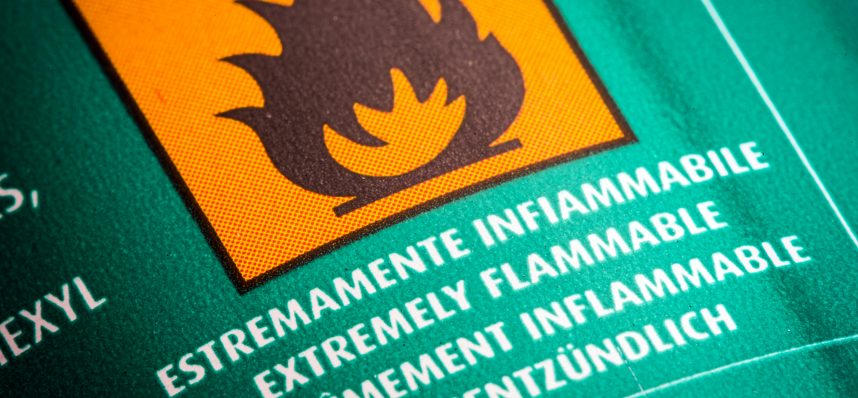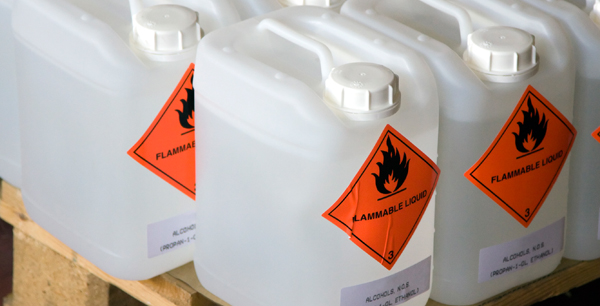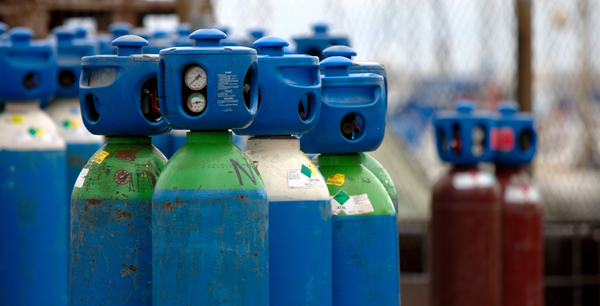
It is hard to predict when a fire might start, but it is straight-forward to predict what may cause it. It is very important to have a fire protection plan in place, should a fire break out, and especially for when dealing with flammable substances. By using flammable substances, you increase the chance of a fire being started, and it is essential to know how to stay safe, and how to deal with the situation properly.

Ensuring there is plenty of fresh air where flammable liquids or gases are stored and used means that any vapours emitted from a spill or leak will be rapidly dispersed. Checking the ventilation and space within a room will help you decide whether using the flammable substances would be a safe idea. Keeping all the dangerous substances away from other processes and general areas will help make a designated zone, which should be recognisable and safely locked away, and regularly checked.

Containing the flammable substances safely will help prevent leaks and will keep everything organised and easy to transport. The use of lidded containers, strong cases, spillage trays etc will help prevent any accidents and give protection from the dangerous materials. When spilt, liquids can flow a long way to an ignition source, and flash back to the source. Spills on clothing can present a risk of serious injury if ignited. If possible, self-closing lids should be used, and containers should be closed when not in use.

Fine flammable dust can be dispersed into the atmosphere, and when ignited, can explode and cause a lot of damage. Regularly cleaning and vacuuming as and when flammable substances are used limits the spread of dust, and therefore makes the chances of dust fires minimal. It is important to check and clean surfaces consistently, especially in areas of constant public use.

Certain types of plastic, packaging, polyester and textiles can ignite easily, and burn violently. They often give off a thick, black smoke when on fire, and are one of the main causes of fire related deaths within the UK. Make sure to keep these materials in a safe place, away from heaters and electrical equipment. Many electrical devices can run hot and act as an ignition source. Make sure that all exits and walkways are clear of packaging and materials, because in the events of a fire, these routes of escape could be made dangerous and hidden in smoke.

Although oxygen is essential for life, it is a part of controlled burning, for example in gas fire or oxy-fuel gas cutting. Its misuse can lead to serious consequences, and materials that would ordinarily burn slowly, would harshly in an oxygen-enriched atmosphere. Grease and oil may also burst into flames in this atmosphere, and you should never use oxygen instead of compressed air. Never apply grease or oil to equipment that contain oxygen. Check that ventilation is adequate and that oxygen cylinders are used safely, and never use oxygen equipment above the pressures

For the majority of fires, water is the quickest and safest way to put fires out, but only under certain conditions. Some fires are started by certain substances that would not be put out by water, but require alternative agents such as foam, CO2 or chemicals. It is important to have the correct, and best extinguishing agents available should any situation arise. Most facilities should also have lights and alarms in place as a basic measure of fire protection, mostly to make people aware of the dangers fast and effectively, and to help aid their evacuation. Fire extinguishers should be shaken and checked monthly, and their pressure levels should be measured annually.

Safety data sheets provide essential information on chemicals and measures and should be given with any hazardous chemical. It is important to read and remember all the emergency procedures and suitable precautions listed prior to going near any hazardous chemicals and equipment. Information about the substances should be stored both online and in paper format, and should be updated regularly as to the amount, dates, last person to use, etc. This way all data is kept and managed effectively.

There is always the risk of something going wrong, no matter what sector, industry or position you are in. You need to evaluate and think about potential problems and ensure everyone knows exactly what to do in an emergency situation. Instructing staff is an important part of their training, and they should know how to prevent mixing chemicals, avoid leakages, whether first-aid is required and if so, who is trained, and what the safest routes of exit are.
Whether you need fire extinguishers, a risk assessment, or a full fire safety package, WJ Fire can offer a tailor-made service to increase your fire protection and enrich your fire safety knowledge. We have serviced over 100,000 fire extinguishers, completed over 3,500 risk assessments and trained over 1,500 staff. We have expertise in every field of fire safety and have been operating all over the South of England for the past 20 years.
We would love to hear from you and would be more than happy to discuss the full range of fire safety services we can offer you. Call us on 01420 476071, or via email at info@wjfire.co.uk to get in touch. We look forward to speaking with you!